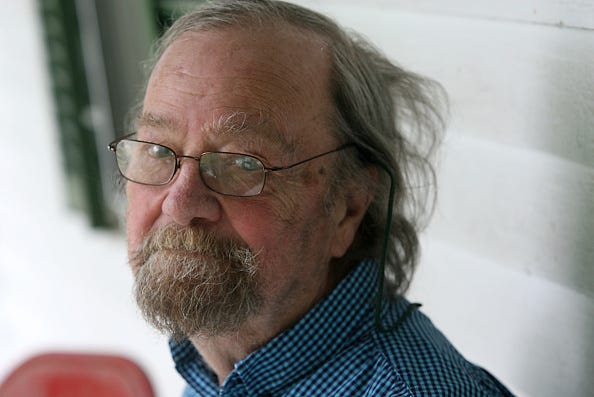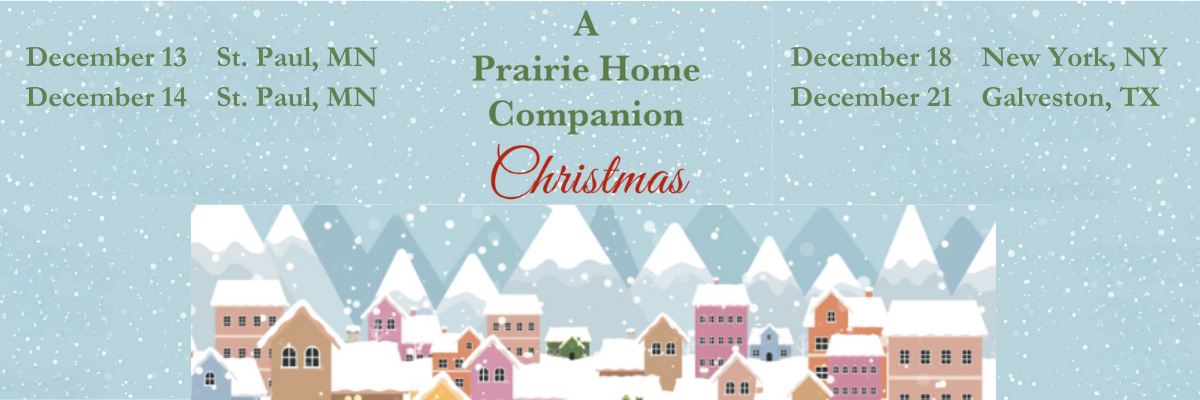The Writer's Almanac from Friday, September 20, 2013
"A Grace" by Donald Hall, from Old & New Poems. © Ticknor & Fields, 1990.
ORIGINAL TEXT AND AUDIO - 2013
It was on this day in 1848 that the American Association for the Advancement of Science, known as AAAS, was created. It was founded by 78 scientists, all members of the Association of American Geologists and Naturalists. They wanted to increase the scope of their group to include all the sciences, and they modeled themselves on the British Association for the Advancement of Science. Despite their British model, American science in the 1840s had a different focus than European science. In Europe, scientists were more interested in theoretical work — there were big breakthroughs in chemistry, physics, evolution, and electromagnetism.
In 1845, Alexander van Humboldt published the first part of his five-volume work Cosmos, an attempt to bring together all the fields of science into one book. Humboldt was an international celebrity, adored in America — scientists sought his endorsement, journalists declared that he was "without rival in all the branches of human knowledge," and everyone from politicians to inventors tried to link their names to his. The media were constantly comparing American scientists to Humboldt, usually unfavorably.
There were some American scientists working in this mold, many of them founders of AAAS. In 1846, Joseph Henry, a scientist who worked on electromagnetism, was elected the first secretary of the Smithsonian. In 1848, zoologist and geologist Louis Agassiz started work on a museum of natural history at Harvard. Benjamin Peirce was a mathematician and astronomer; in the 1840s, he was hard at work researching and publishing An Elementary Treatise on Plane and Spherical Trigonometry (1840) and two volumes of An Elementary Treatise on Curves, Functions, and Forces (1841 and 1846).
But in general, while Europeans were focusing on more theoretical scientific pursuits, Americans were engaged in a very practical side of science: technology. The word scientist did not even exist until the 1830s, and the line between scientist and inventor was a blurry one. There were plenty of important American inventions in the 1840s. Samuel Morse sent the first successful telegraph. Robert McCormick sold his first McCormick reaper, a machine that cut grain much more efficiently than a farmer with a scythe. Charles Goodyear invented vulcanized rubber, which finally made rubber stable (before that, it would melt in the heat and freeze in the cold). John Rand invented the metal paint tube, which revolutionized the art world — before that, painters used pig bladders; they were hard to use outside because they frequently burst, and painters could only use one color at a time.
Americans were also focused on geology and botany, which went hand in hand with America's westward expansion — there was plenty of uncharted territory to explore and catalog. One well-known paleontologist and geologist was Edward Hitchcock, the man who came up with the idea for the Association of American Geologists and Naturalists, the parent organization of AAAS. He conducted geological surveys of New England, and studied fossils from the Connecticut Valley. Hitchcock spent the 1840s working on his greatest passion: natural theology, an attempt to explain the Bible through the lens of a contemporary understanding of geology. To the end, Hitchcock — like many of his contemporaries, including Louis Agassiz — strongly opposed Darwin's theories of evolution.
After the American Association for the Advancement of Science was officially created on this day in 1848, the scientists adjourned. They met again at 4 p.m. the same day to talk science instead of organizational details, and they spent the next few days doing exactly that. One of the most warmly received presentations at the first meeting was a paper by oceanographer and naval officer Matthew Fontaine Maury, "Wind and Current Chart." He explained that hundreds of ship navigators were sending data to the naval center for recording, and he declared: "Never before was such a corps of observers known." The attendees were enthusiastic about this early citizen science.
During these early years, every AAAS meeting was a major event for the city in which it was held, the focus of media coverage and speculation. AAAS members became small-time celebrities and were even given discount tickets to ride the railroads. More than 2,000 people joined the American Association for the Advancement of Science during its first 12 years. It was suspended during the Civil War, but resumed in 1866 and is still going strong today. They have been publishing the journal Science since 1880, which today has a circulation of more than 135,000.
It's the birthday of the 14th poet laureate of the United States, Donald Hall, born in New Haven, Connecticut, in 1928. He started writing poems when he was a kid at his grandparents' farm in New Hampshire. When he was 16, he went to a writing conference and met Robert Frost, and later that year, he published his first poetry. He moved around for many years, studying and teaching at various universities, and at the University of Michigan, he met another poet, Jane Kenyon, and they got married and moved back to his grandparents' farm. He said that moving there was like "coming home to the place of language."
Hall and Kenyon wrote about each other and their life together. Jane Kenyon died of leukemia in 1995. Hall wrote Without (1998) about caring for his wife during her illness and living without her after her death. He also wrote children's books, as well as books about baseball and the sculptor Henry Moore. His most recent books are Unpacking the Boxes: A Memoir of a Life in Poetry (2008) and The Back Chamber (2011).
He said: "I see no reason to spend your life writing poems unless your goal is to write great poems."
And, "At sixteen the poet reads Whitman and Homer and wants to be immortal. Alas, at twenty-four the same poet wants to be in The New Yorker."
It's the birthday of the writer Upton Sinclair, born in Baltimore, Maryland, in 1878. When he was 15 years old, he started supporting himself by writing dime novels, and he wrote pulp fiction to get himself through school. He went to Columbia University and wrote one novelette a week the whole time.
He got an assignment from a socialist weekly to investigate working conditions in the meatpacking industry. Horrified by what he saw in Chicago, he wrote The Jungle (1906). It kept getting rejected so he finally published it at his own expense. It was his sixth novel and his first successful one — a huge success. After The Jungle was published, President Roosevelt received a hundred letters a day demanding reforms in the industry. Upton Sinclair said, "I aimed at the public's heart, and by accident I hit it in the stomach."
He used the proceeds from the novel to open a socialist colony in New Jersey. But when it burned down in a fire, he was poor again. He went on to write almost 100 books.
He said, "It is difficult to get a man to understand something when his salary depends upon his not understanding it."
It's the birthday of poet and novelist Stevie Smith, born Florence Margaret Smith in Hull, Yorkshire, England (1902). She lived in the same house from the time she was three years old until her death in 1971. She approached a publisher with her first book of poems when she was in her 30s. He told her to go away and write a novel instead. So that's what she did. Her first novel was Novel on Yellow Paper (1936), and she went on to write other novels and short stories, but her greatest love was always poetry. She actually wrote one of her short stories in meter, and later published it as a poem.
She was known for writing light verse about dark subjects. Her most famous collection of poems is Not Waving but Drowning (1957). In the title poem, she wrote: "Nobody heard him, the dead man, / But still he lay moaning; / I was much further out than you thought / And not waving but drowning."
Be well, do good work, and keep in touch.®





